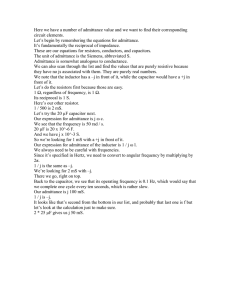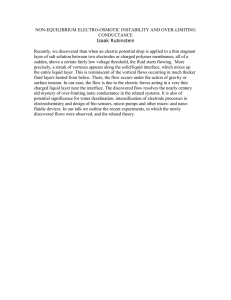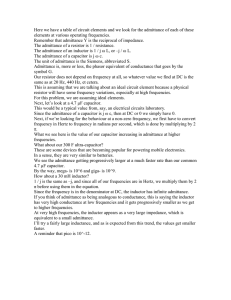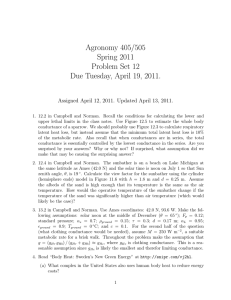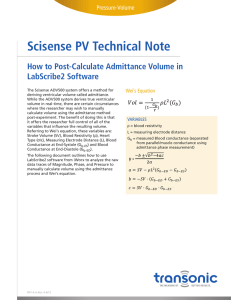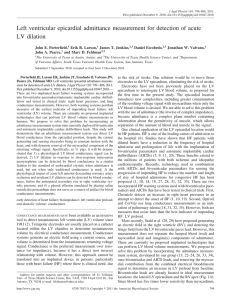Admittance Validation
advertisement
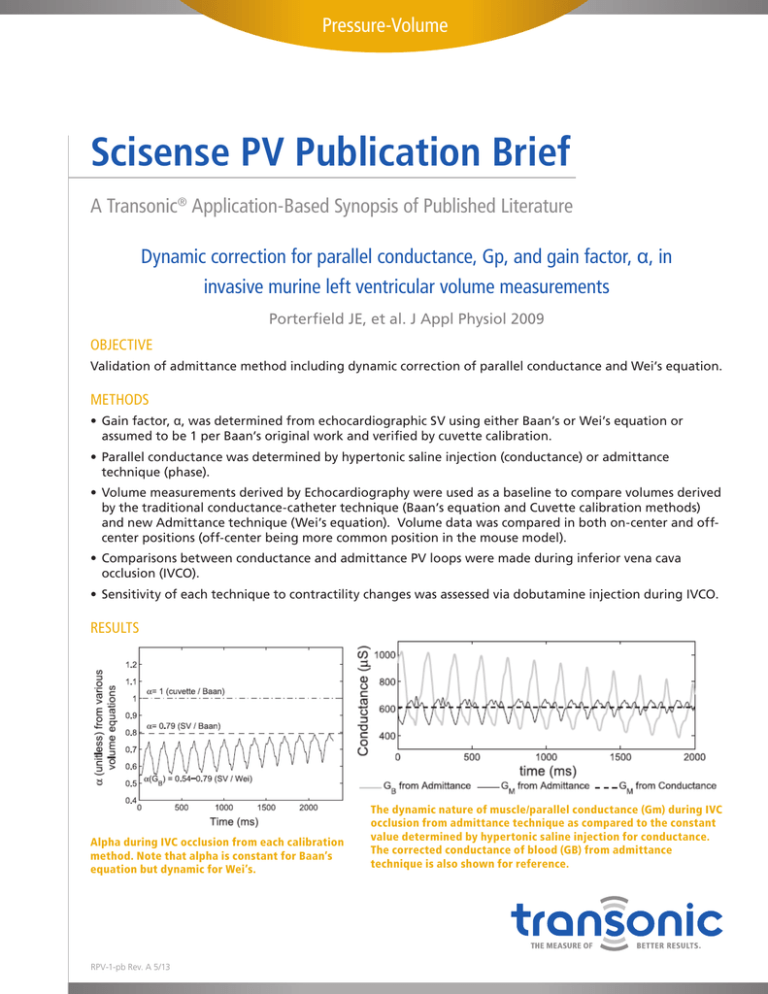
Pressure-Volume Scisense PV Publication Brief A Transonic® Application-Based Synopsis of Published Literature Dynamic correction for parallel conductance, Gp, and gain factor, α, in invasive murine left ventricular volume measurements Porterfield JE, et al. J Appl Physiol 2009 OBJECTIVE Validation of admittance method including dynamic correction of parallel conductance and Wei’s equation. METHODS • Gain factor, α, was determined from echocardiographic SV using either Baan’s or Wei’s equation or assumed to be 1 per Baan’s original work and verified by cuvette calibration. • Parallel conductance was determined by hypertonic saline injection (conductance) or admittance technique (phase). • Volume measurements derived by Echocardiography were used as a baseline to compare volumes derived by the traditional conductance-catheter technique (Baan’s equation and Cuvette calibration methods) and new Admittance technique (Wei’s equation). Volume data was compared in both on-center and offcenter positions (off-center being more common position in the mouse model). • Comparisons between conductance and admittance PV loops were made during inferior vena cava occlusion (IVCO). • Sensitivity of each technique to contractility changes was assessed via dobutamine injection during IVCO. RESULTS Alpha during IVC occlusion from each calibration method. Note that alpha is constant for Baan’s equation but dynamic for Wei’s. RPV-1-pb Rev. A 5/13 The dynamic nature of muscle/parallel conductance (Gm) during IVC occlusion from admittance technique as compared to the constant value determined by hypertonic saline injection for conductance. The corrected conductance of blood (GB) from admittance technique is also shown for reference. Pressure-Volume Scisense PV Publication Brief Cont. RESULTS CONT. Sample of PV loops from mice with catheter positioned off-center. Admittance technique with Wei’s equation consistently produced values closer to those determined by echo. Using SV to determine alpha gives better results than assuming a value of 1, however it is highly dependant on the success of the hypertonic saline injection and is prone to overestimating volume. Difference in ESV (circle) and EDV (x) of each method compared to echo. Admittance produces values much closer to those determined by echo (solid line = mean) with less variation (dashed lines = 95% confidence interval) when the Catheter is in an off-center position (most common). Admittance also produces superior results, but to a much lesser extent when the Catheter is properly centered (results not shown). Scisense PV Publication Brief Cont. CONCLUSIONS • Admittance technique using Wei’s equation produces more accurate volumes in off-center positions than using Baan’s equation. • Gain factor, alpha, is not constant and assuming a constant based on stroke volume or cuvette calibration gives inaccurate volume measurements when compared to echocardiography. In Admittance alpha is replaced with gamma (γ) and it is not constant. Gamma correction factor changes during the cardiac cycle, which makes this technique more accurate in final volume derivation. • Parallel conductance is not constant, but changes over the course of the cardiac cycle as the heart wall moves closer to and further away from the Catheter. Hypertonic saline injection provides a single, constant value which is prone to large userdependent variability. Because hypertonic saline injection provides a single data point, it cannot account for variations over the cardiac cycle or the course of the experiment. PV loops during IVC occlusion demonstrate differences in volumes, contractility (ESPVR) and EDPVR between conductance with Baan’s equation, and admittance with Wei’s equation. Wei’s equation appears to be more sensitive than Baan’s equation in the detection of increased inotropy following dobutamine infusion (results not shown).. TRANSONIC® SCISENSE COMMENTS The Scisense ADV500 PV System offers Admittance, using Wei’s equation, to produce more accurate volume measurements. Changes over the course of an experiment (ventilation settings, temperature, drug induction, blood loss etc.) can impact the volume in the ventricle. Hypertonic saline injection only captures the parallel conductance at a single point in time (10-20 PV loops) and would have to be preformed for each change in each animal in order to maintain accuracy. In Admittance, parallel conductance is measured and automatically removed, allowing accurate volume measurement in real-time. REFERENCE Porterfield JE, Kottam AT, Raghavan K, Escobedo D, Jenkins JT, Larson ER, Trevin˜ o RJ, Valvano JW, Pearce JA, Feldman MD. (2009) “Dynamic correction for parallel conductance, GP, and gain factor, α, in invasive murine left ventricular volume measurements.” J Appl Physiol 107: p. 1693–1703. www.transonic.com
